
-
Find the right food for your petTake this quiz to see which food may be the best for your furry friend.Find the right food for your petTake this quiz to see which food may be the best for your furry friend.Featured products
 Puppy Large Breed Chicken & Brown Rice Recipe
Puppy Large Breed Chicken & Brown Rice RecipeVital nutrients to support 5 essential building blocks for lifelong health
Shop Now Hill's Science Diet Adult 7+ Senior Vitality Small & Mini Chicken & Rice Recipe Dog Food
Hill's Science Diet Adult 7+ Senior Vitality Small & Mini Chicken & Rice Recipe Dog FoodImproves everyday ability to get up & go
Shop Now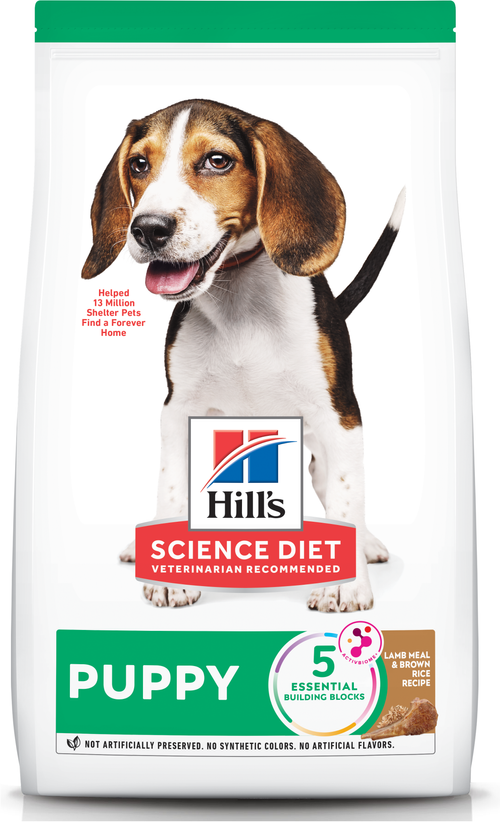 Puppy Lamb Meal & Brown Rice Recipe
Puppy Lamb Meal & Brown Rice RecipeVital nutrients to support 5 essential building blocks for lifelong health
Shop NowFeatured products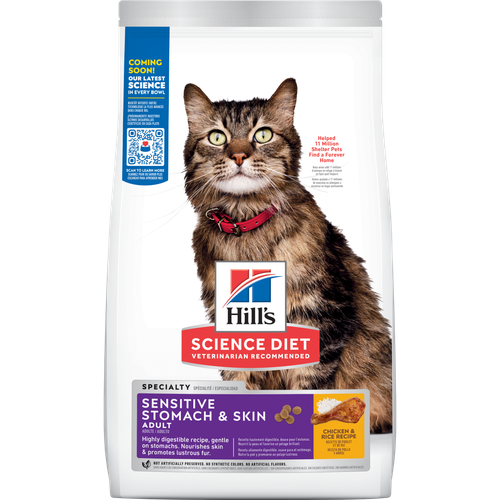 Adult Sensitive Stomach & Skin Cat Food
Adult Sensitive Stomach & Skin Cat FoodHighly digestible food that is gentle on the stomach. Nourishes skin & promotes lustrous fur.
Shop Now Adult Indoor Chicken Recipe Cat Food
Adult Indoor Chicken Recipe Cat FoodSupports energy level and beautiful fur in indoor cats
Shop Now Adult 7+ Chicken Recipe Cat Food
Adult 7+ Chicken Recipe Cat FoodSupports energy level and beautiful fur in mature cats
Shop Now -
Dog
- Dog Tips & Articles
-
Health Category
- Weight
- Food & Environmental Sensitivities
- Urinary
- Digestive
- Joint
- Kidney
-
Life Stage
- Puppy Nutrition
- Adult Nutrition
Cat- Cat Tips & Articles
-
Health Category
- Weight
- Skin & Food Sensitivities
- Urinary
- Digestive
- Kidney
-
Life Stage
- Adult Nutrition
Featured articles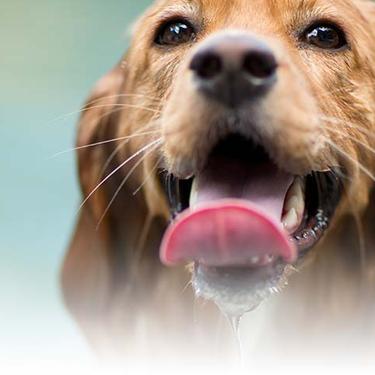 Water
WaterDiscover why water is the most important nutrient for your dog or cat to live a healthy life. Find out how much water your pet should consume each day.
Read More Pet Food Storage Tips
Pet Food Storage TipsDiscover how and where to store your dry, as well as canned, dog and cat food. Learn how to find the "best before" dates on all Hill's pet food packaging.
Read More The Incredible Science Behind Your Pet's Microbiome
The Incredible Science Behind Your Pet's MicrobiomeLearn what a pet's microbiome is, how it contributes to your pet's gut & overall health, and why nutrition is important in maintaining healthy microbiomes.
Read More -

Having decided to bring home a new puppy, it's important to balance your excitement with a plan for puppy proofing your home. These tips will help you prepare for their arrival:
Look at Your Home Through Your Dog's Eyes
Before you bring your new best friend home, make sure it's a safe place. And lucky for those who've ever prepared for a baby, the process is similar for your dog. Check for any safety hazards that could hurt a curious animal. Wondering what to look out for? Start by walking around your home for loose wires and exposed electrical cords. Puppies like to chew, and unfortunately these cables are very tempting. Tape down or secure any that cannot be moved or hide small ones on a shelf they can't get to.
Are kids in the house? Invite them into the puppy proofing game. Down on your hands and knees, pretend to be puppies yourselves. Don't knock this technique; it lets you better identify any toys, objects, or even trash your dog could accidentally swallow (or purposely try to eat). If there's an area of your home that's impossible to clean up, such as a playroom, keep your dog away by closing the door or installing a baby gate. Barriers can be good to keep at the top or bottom of the stairs, especially if you have a small or a toy breed dog that could be hurt by a tumble.
Household Items: Not Chew Toys
It's easy for your dog to mistake items around your home as their personal playthings. Start by unplugging any small appliances after you use them. For example, don't leave your hair dryer plugged in with its cord dangling off the bathroom sink. If pulled, it could hit your dog, and if they chew it, put the mat risk for an electric shock. Keep in mind chewed cables can also be a hazard for your home in general. Frayed wires could spark, causing an electrical fire.
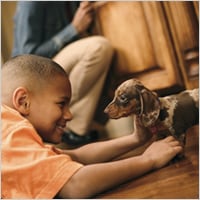
Cords aren't the only items your dog may want to chomp on. In fact, puppies love teething on shoes, and you probably have many pairs at entrances or open closets. Whether you own high heels, sandals, sneakers, or boots, dogs don't discriminate when looking for a toy or afternoon snack. If your new puppy gets into your footwear, your shoes can easily be ruined. Even more important, your puppy could swallow pieces of a shoe and choke. Keep your shoes closed off in a room or compartment where your dog can't access them. It's best to reinforce that household items such as shoe sare not toys from an early age to help save you from financial headaches, having to replace shoes, rugs, clothing, children's toys, and more while also keeping your puppy safe.
Think About Pools & Heat Sources
Even if you have taken the time to clean up and puppy proof, there are many common household items that can be dangerous to a new pup. Certain areas of your home need puppy proofing as a whole. Do you have a pool in your backyard? Be sure it's gated off so your dog can't jump in. Although some dogs are strong swimmers, a pool still poses a drowning risk for puppies who are left unattended.
All hot spots are no-no's to keep your puppy away from, whether it's a fireplace, electric heater, or wood stove. Secure the perimeter of each heat source and encourage your puppy to sleep and play in safer areas.


Tasty Tips
Consider Cleaners, Medicine & More
Houseplants add gorgeous greenery to your home, but some plants are extremely toxic to dogs. Know which plants are toxic—such as mistletoe, chrysanthemums, and peace lillies —and remove any that your new pet may have access to. . Many household cleaners and similar products can be just as dangerous if ingested. Keep your pet away from volatile substances in your garage such as oil, car cleaners, rock salt, and antifreeze.
Also, dogs can get confused over medications or vitamins and think they're treats. Keep them stored safely in a high cabinet where neither kids nor pups can get to them. The same goes for dishwasher or laundry detergent, both of which should be stored out of reach—preferably in a locked closet.
Keep the Floor Clean
Keep a careful eye on what ends up on the floor once you bring your dog home. Yes, you and your family crawled around to pick up tiny items to protect your dog before you brought them home. This needs to be done on a regular basis once they move in. Clean up anything that falls on the floor when cooking; foods like chocolate, grapes and onions are well known to be harmful to dogs. Your eager companion could just as easily choke on small items or eat something that causes trouble with digestion, like dental floss or a rubber band. Vacuum or sweep your floors regularly to prevent any of these scary issues.
Protect Your Belongings
Not only do you want to keep your puppy safe, but you should also protect your belongings from them. No one wants to see a chewed up couch, scratched door, or broken irreplaceable keepsake when they get home. The first step is prevention. If there's anything you wouldn't want ruined or broken, move it temporarily. Use washable blankets and liners to prevent any accidents from staining your couch, and puppy-safe bitter sprays can be used on exposed wood to repel chew-crazy pooches. A large glass urn on your floor may deserve a new home in a closet until your puppy is tame enough to navigate it. Consider this for any heirlooms that can be peed on, chewed up, or broken in an instant.
Plan for Mischief
Even with the best puppy proofing and dog training regimen, it's likely that your furriest family member will still find ways to get in trouble. But be patient with them; a puppy needs to learn which behaviors are acceptable. doesn't know your old house slippers aren't chew toys until you teach them. They may also think the kitchen garbage can is one tall doggy bowl filled with a great selection of dinner treats. Don't let this potential overwhelm you—most situations can be addressed as they happen. Practice your dog-training techniques so that your dog will know what they can and cannot play with.
It only takes a little time to puppy proof your home, and your dog will be grateful to live in such a safe place. As they grow with your family, watch them learn what's allowed inside, and soon you'll find yourself having to put in less effort to remind them. Until then, keep your new puppy safe from any possible hazards.


Erin Ollila believes in the power of words and how a message can inform—and even transform—its intended audience. Her writing can be found all over the internet and in print, and includes interviews, ghostwriting, blog posts, and creative nonfiction. Erin is a geek for SEO and all things social media. She graduated from Fairfield University with an M.F.A. in Creative Writing. Reach out to her on Twitter @ReinventingErin or learn more about her at http://erinollila.com.
Related products

Vital nutrients to support 5 essential building blocks for lifelong health
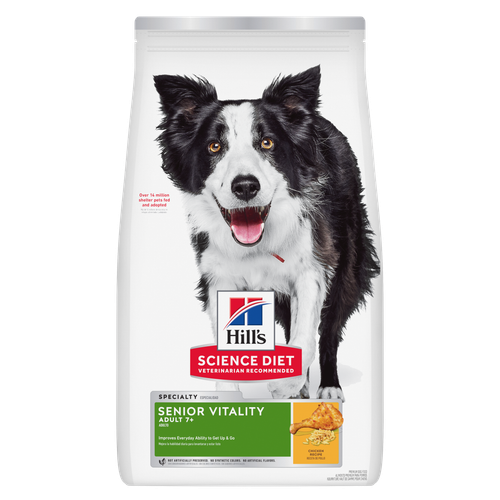
Improves Everyday Ability to Get Up & Go

Improves everyday ability to get up & go

Vital nutrients to support 5 essential building blocks for lifelong health
Related articles
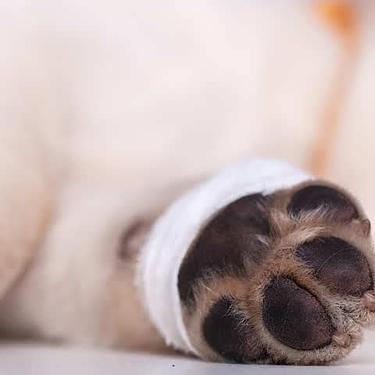
Learn basic steps & precautions for treating a cut on your dog, including what you can put on the cut, and when you should take them to the vet.
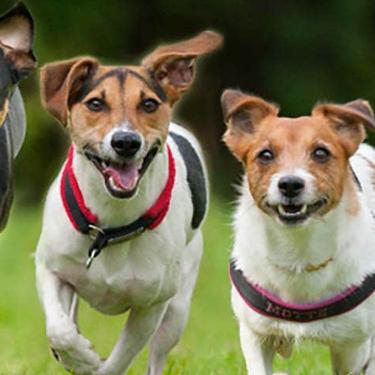
Understand the role that Omega-6 and Omega-3 fatty acids play in your dog's overall health, and how you can ensure they are getting enough.
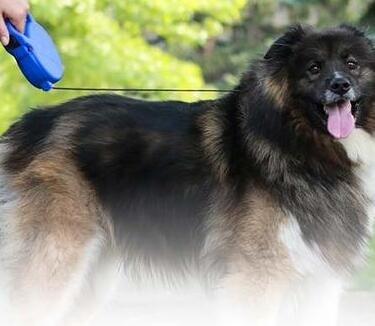
Discover fun and engaging games and other ways to help your dog exercise, keeping him happy and healthy.
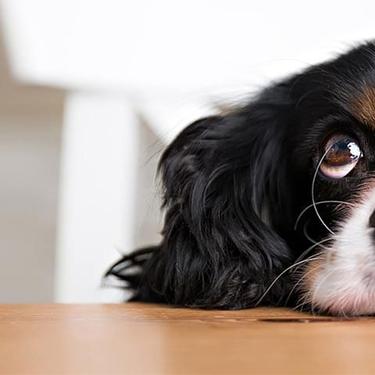
Learn how to stop your dog from begging at the dinner table, and understand how it can help contribute to his health.
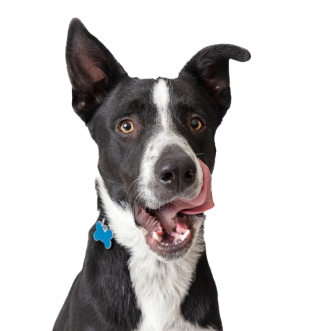
Put your dog on a diet without them knowing
Our low calorie formula helps you control your dog's weight. It's packed with high-quality protein for building lean muscles, and made with purposeful ingredients for a flavorful, nutritious meal. Clinically proven antioxidants, Vitamin C+E, help promote a healthy immune system.
Put your dog on a diet without them knowing
Our low calorie formula helps you control your dog's weight. It's packed with high-quality protein for building lean muscles, and made with purposeful ingredients for a flavorful, nutritious meal. Clinically proven antioxidants, Vitamin C+E, help promote a healthy immune system.

